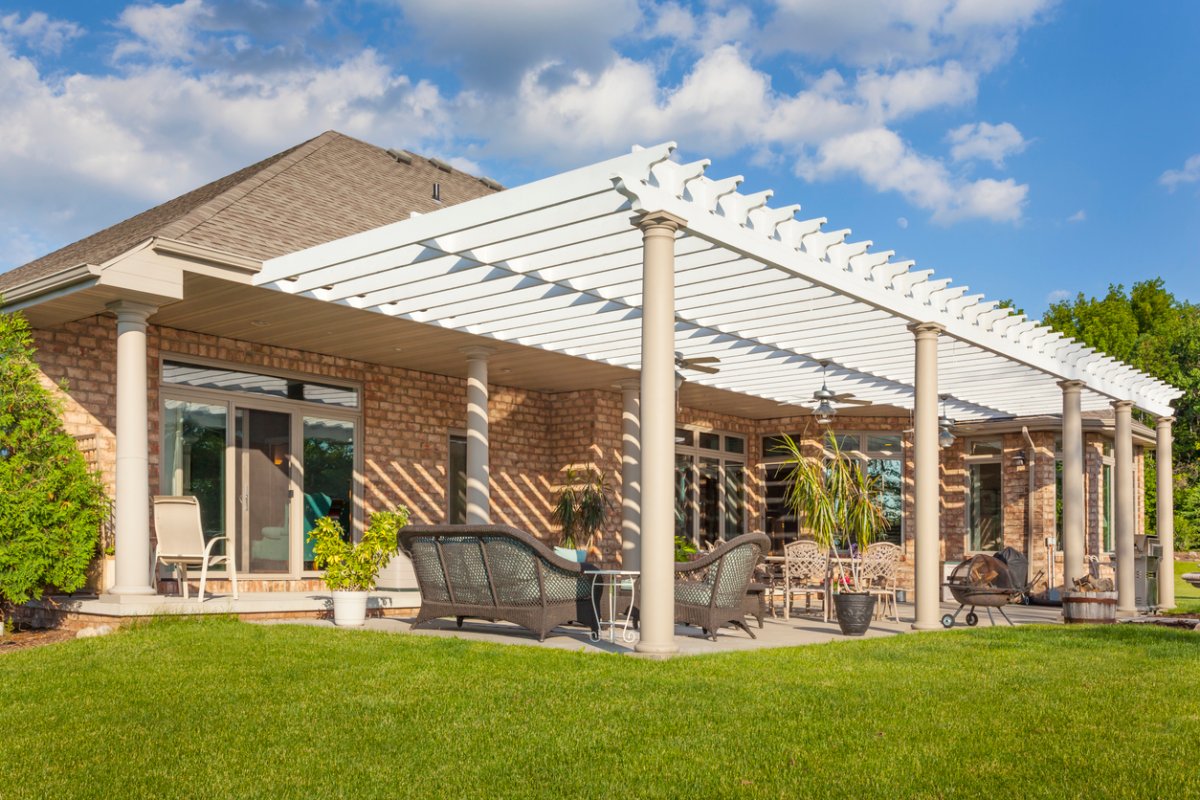

We may earn revenue from the products available on this page and participate in affiliate programs. Learn More ›
Unlike an arch-topped arbor or a gazebo (a stand-alone structure with a solid roof), a pergola is an outdoor structure made of posts, support beams, and rafters. A pergola roof is usually open, but it can be covered with lattice, panels, or vining plants, depending on your preference. Typically made of wood, pergolas are sometimes freestanding, but a pergola attached to a house is more common.
An outdoor pergola can actually add value to your home, enhancing curb appeal and providing a return on investment of anywhere from 50 to 80 percent. Just as importantly, a pergola can enrich time spent in the backyard, serving as a stunning spot to sit back, relax, and enjoy warm weather (and a cold glass of lemonade).
RELATED: The Best Gazebos for Your Deck or Patio
PRO: Pergolas are relatively budget-friendly, especially if you build one yourself.
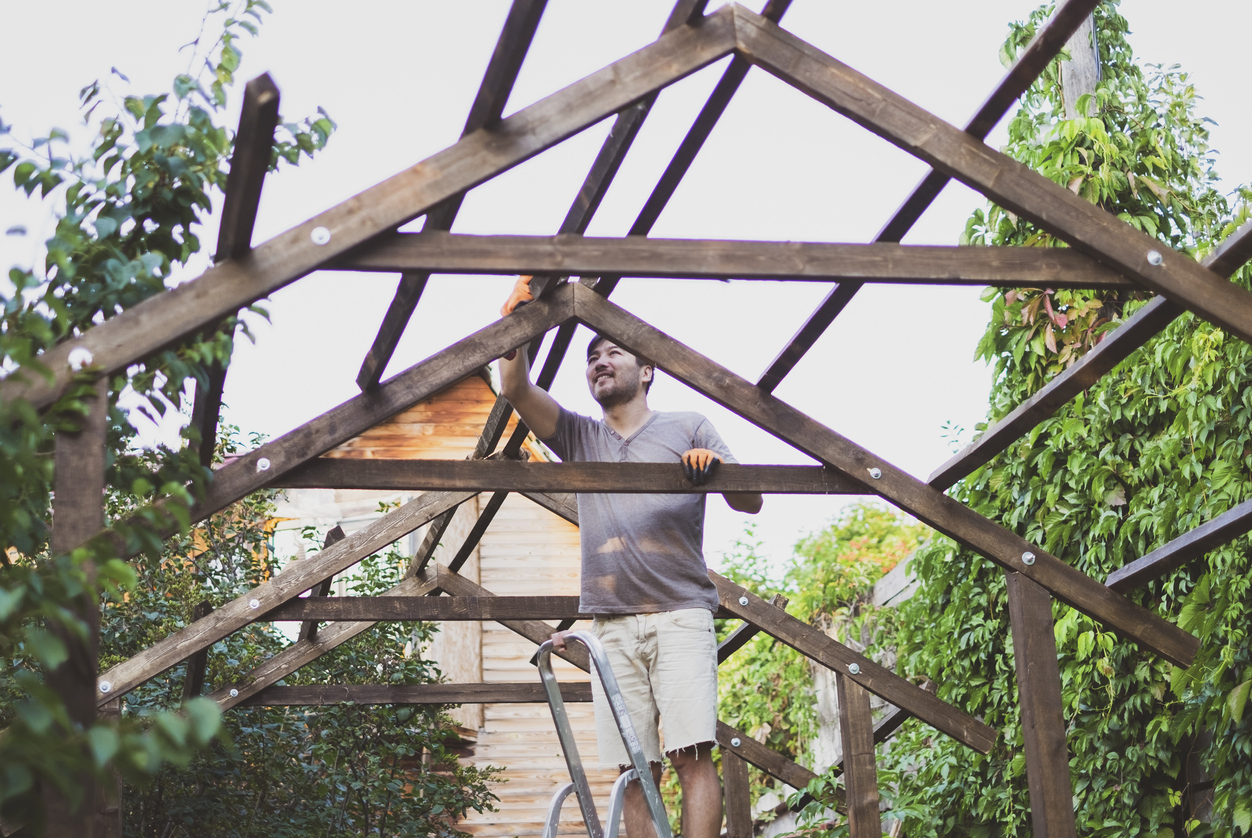
It all depends on size, shape, style, and materials, but the cost of a modern pergola is generally affordable, averaging just over $4,000 to build.
Because they require fewer materials than less open structures, such as gazebos, pergolas are perfect for homeowners on a budget. Pressure-treated lumber, the most important pergola building material, is one of the least expensive types of wood on the market and available just about everywhere.
Hiring a pro to build a pergola is recommended, but you can save money by tackling the project yourself if you’re an experienced builder. Find pergola plans and/or DIY pergola kits online or at a hardware store to get started.
CON: Pergolas provide little protection from weather.
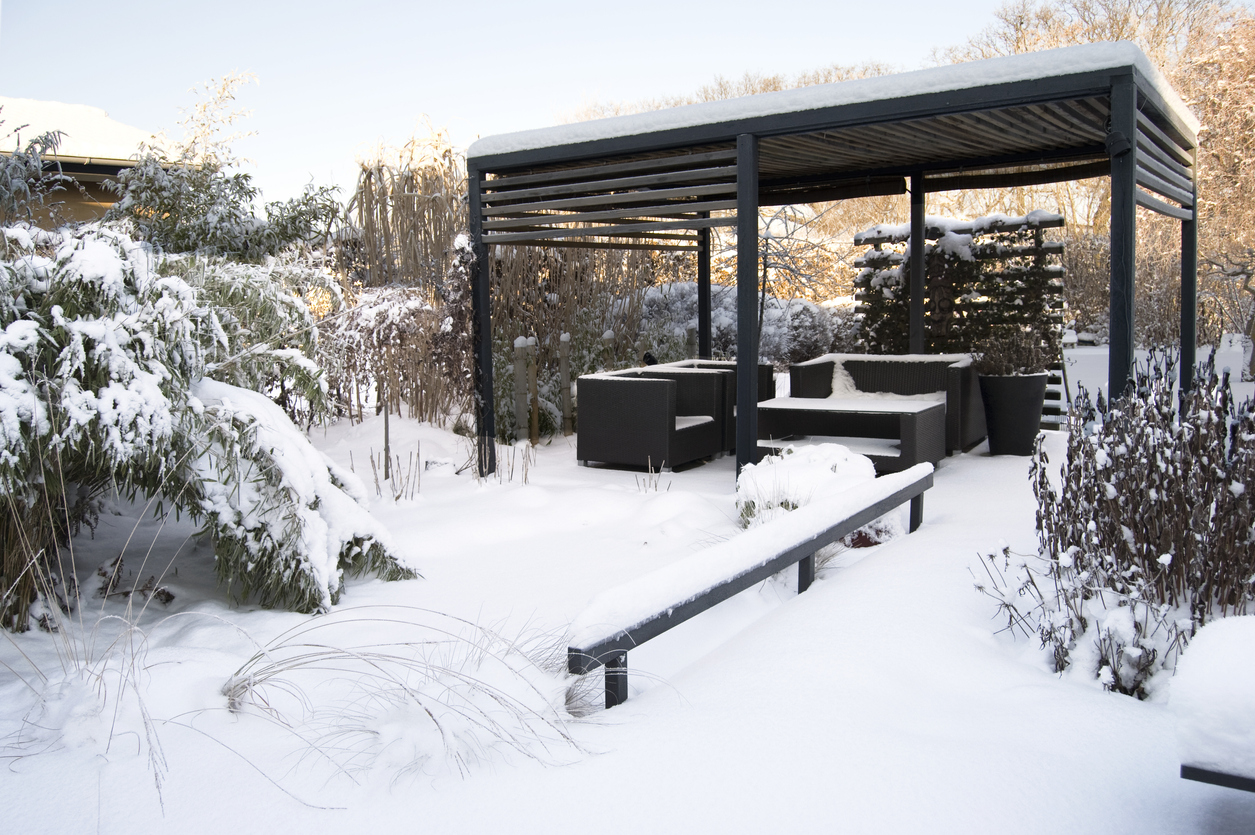
Because a pergola is typically open along the sides and across the top (depending on the design chosen and where it’s positioned in the yard), it won’t keep out much sunlight, rain, wind, or other elements. Outdoor furniture under a pergola is susceptible to sun damage, and the pergola structure itself can fade over time and take a beating during storms and harsh winters.
Bad weather will most likely limit the amount of time you’re able to use a pergola. Because that’s the primary reason most people would want to build one, that may seem counterproductive to anyone looking for an outdoor structure they can use year-round.
PRO: Pergolas add value to your home.
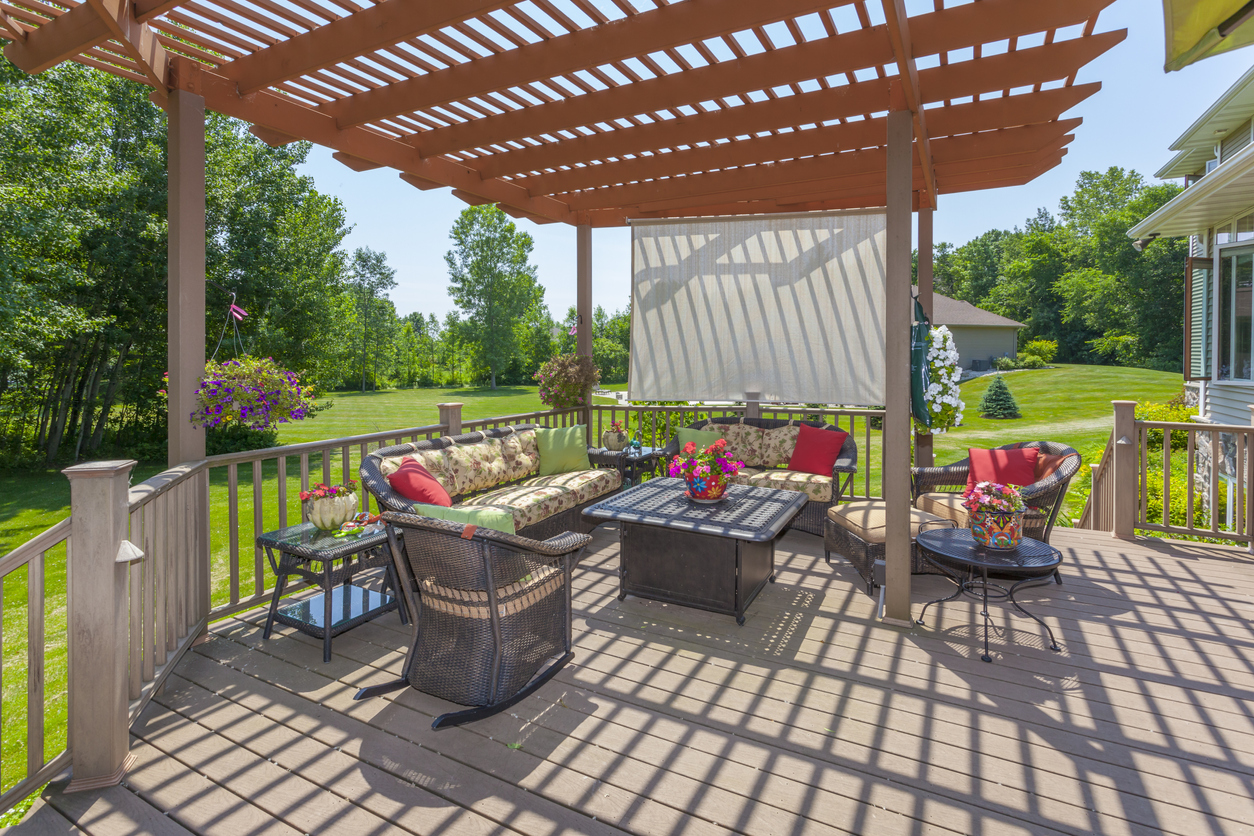
On the curb appeal side of things, Ryan Farley, co-founder of LawnStarter, confirms that pergolas add value to properties, saying, “They can also increase the amount of value you personally receive from your outdoor space.”
In addition to increasing a home’s property value, a pergola can increase the enjoyment of your yard. That’s according to the founder of Improovy, Andrew Kazimierski, who says, “They can provide an excellent place to relax in the shade.”
Lawn Love founder Jeremy Yamaguchi adds that pergolas are “worth it for homeowners who spend a lot of time in their yard or do a lot of hosting.” He explains that a pergola “helps provide shade, cooler temperatures for lounging, and can even extend the lifetime of your patio furniture.”
RELATED: 24 Covered Deck Ideas for a Shaded Backyard Seating Area
CON: They require ongoing maintenance.
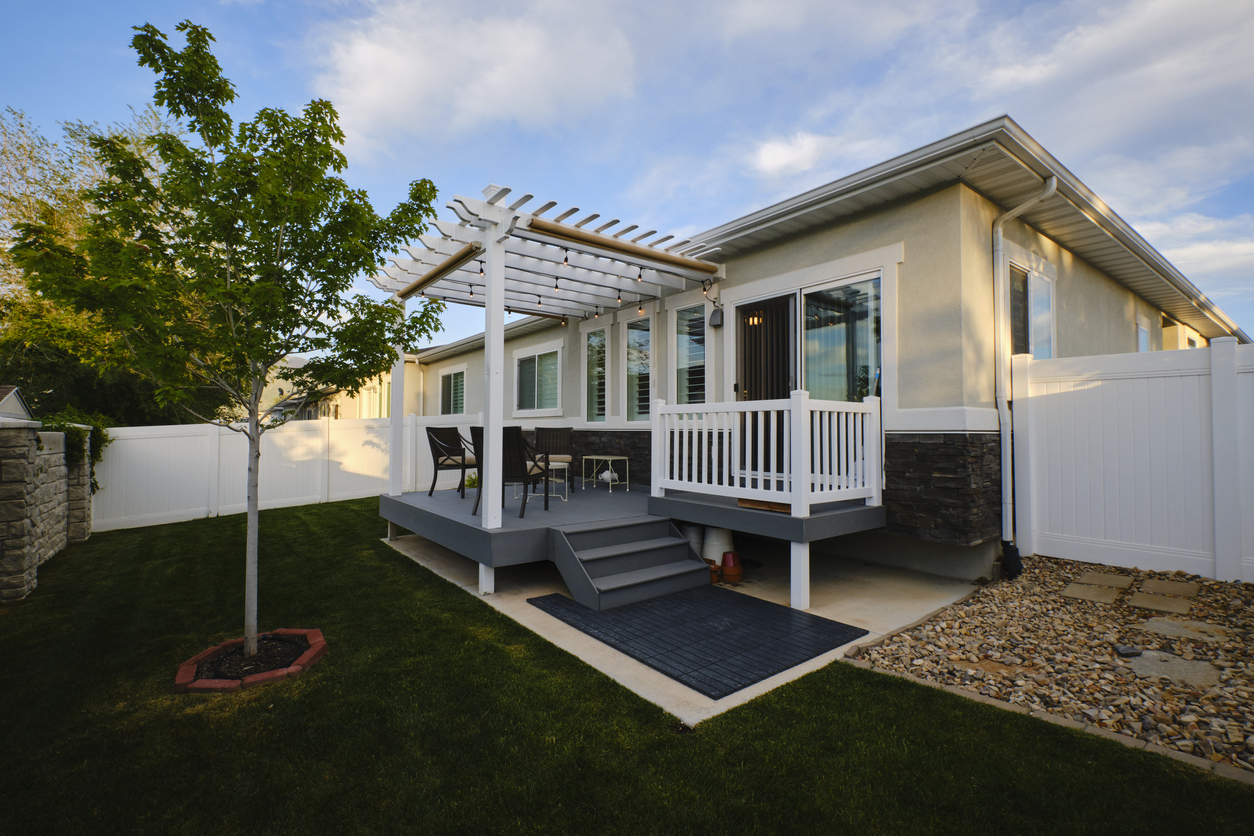
“A pergola will only add value to your home so long as it is well maintained, so you will either need to hire a professional or learn how to refinish wood yourself if you want to keep your investment in good condition,” says Kazimierski.
“Wood pergolas will require regular maintaining,” Farley confirms. In addition to power-washing for general cleaning, they periodically need resealing or re-painting because pressure-treated wood can warp, crack, or rot. “Especially wet climates, this can amount to quite a lot of extra work.”
While a high-pressure hose can remove dirt and stains can often be scrubbed away with enough elbow grease, refinishing wood is a more involved process that may require hiring help.
PRO: Pergolas are versatile.
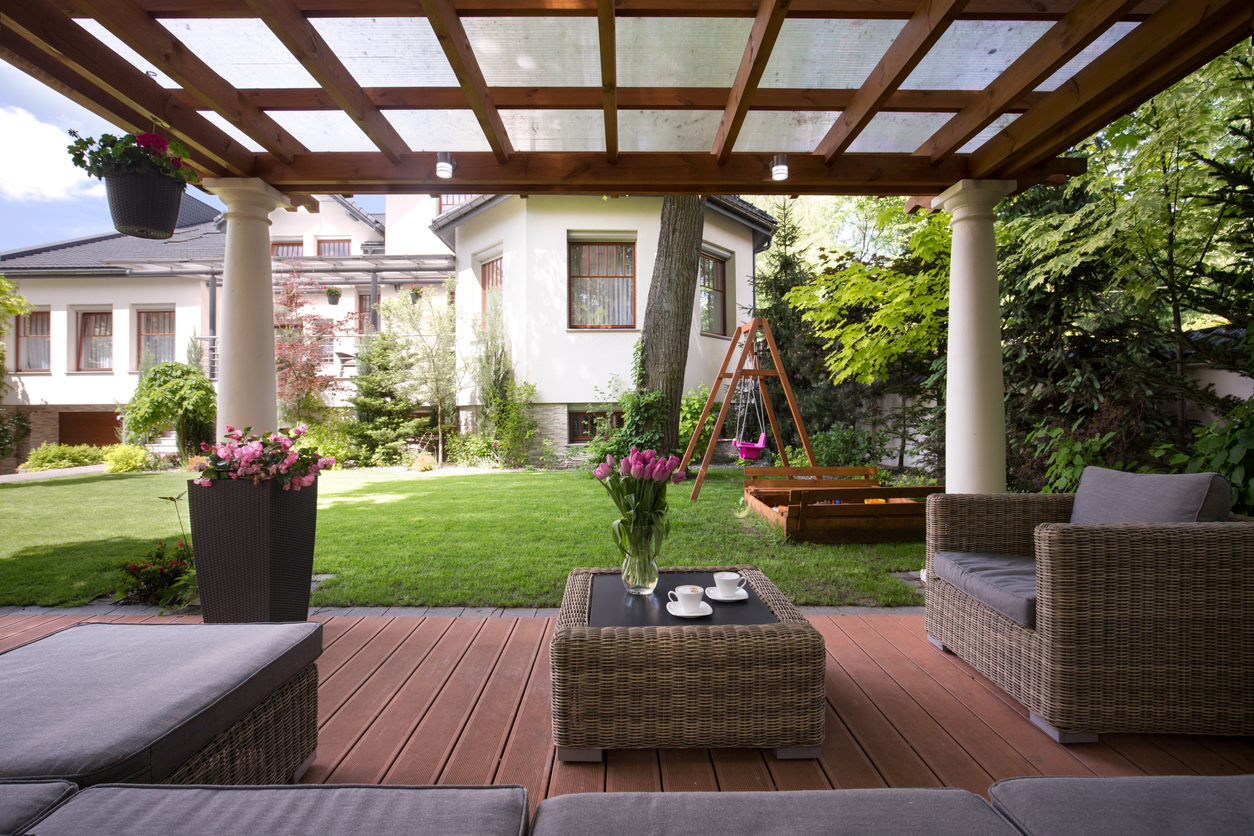
Because they can be constructed in virtually any size or shape and placed pretty much anywhere, pergolas can serve a number of functions. In a small space, they add vertical real estate for plants, whether they vine up the structure or hang from the top or sides. They’re a great place to hang outdoor lights, too, which gives the space a cozy fairytale-like feel.
Pergolas can also be used to extend your sheltered living space, whether covering a deck, patio, swim platform, or hot tub. If built adjacent to the house, they provide shade to cool inside the home, which is especially useful in the middle of the summer. Pergolas can also support and shade a garden seat or swing, giving you a serene spot to read a book or take a midday nap without getting a sunburn.
CON: There’s no protection from insects and other pests.
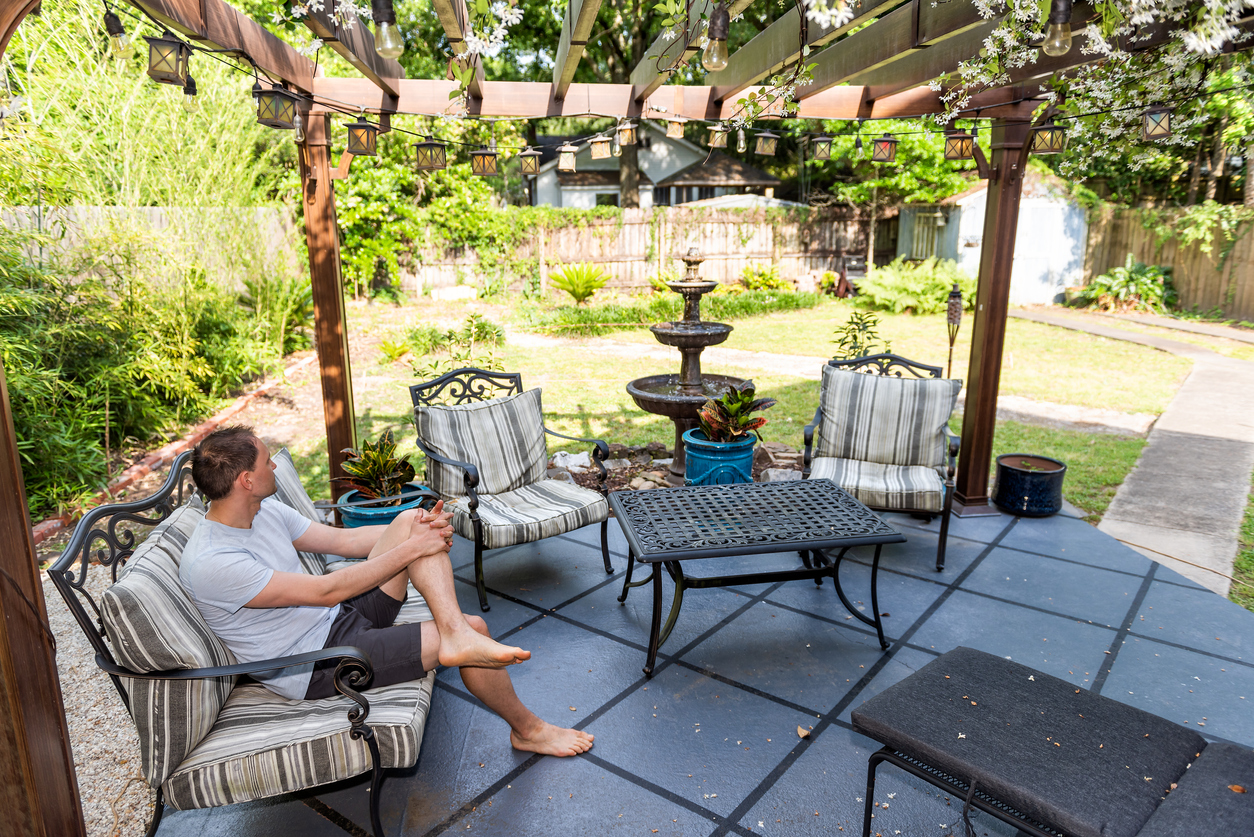
Being open to the outdoors leaves pergolas vulnerable for every kind of wildlife that may want to use them. Not only can mosquitos, flies, and bees disrupt a gathering or spoil your solo enjoyment of the structure, but pergolas can also attract birds and insects.
Wasps and birds may be bold enough to build nests in the corners of pergolas. Birds may also perch on the rafters, raining down excrement. Carpenter bees, termites, and carpenter ants may find the wood delicious and damage the entire structure in days.
PRO: Pergolas add character.
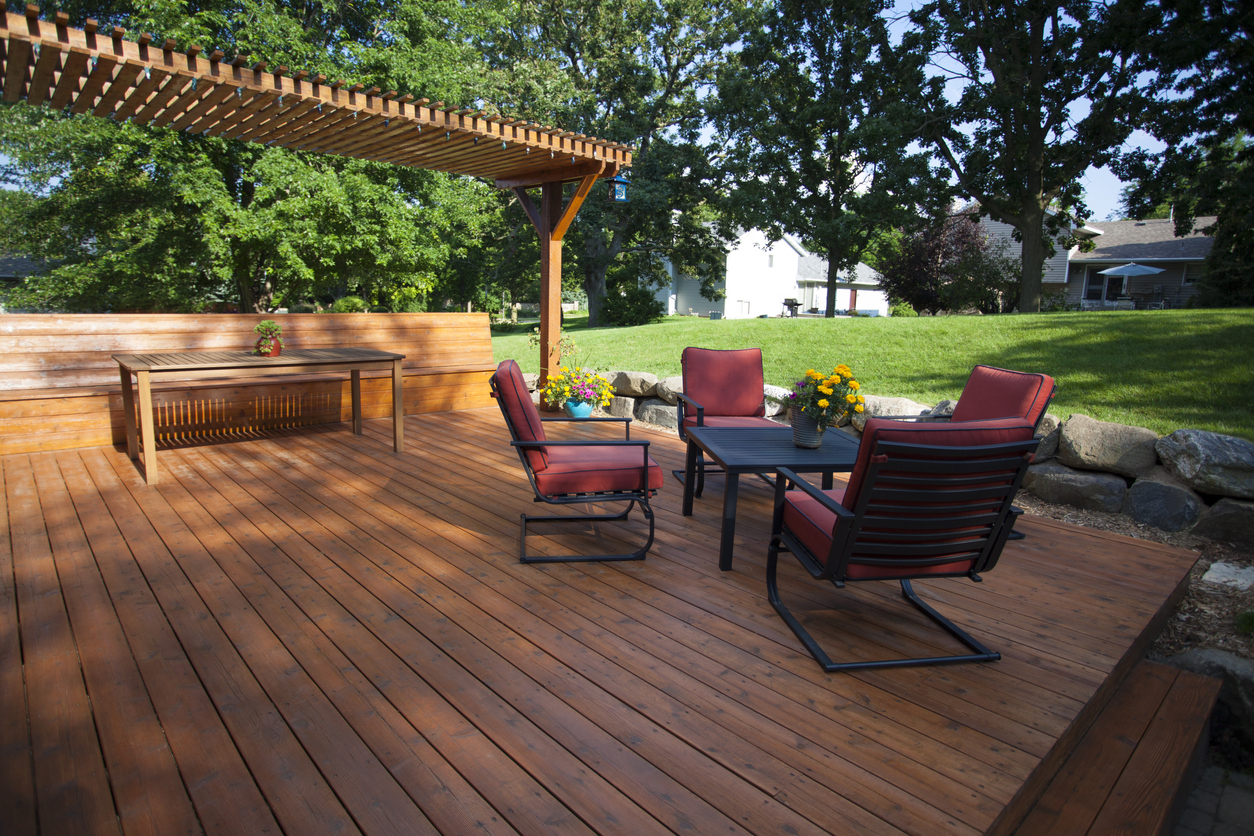
In a neighborhood full of cookie-cutter houses, a pergola can add unique character to your home, complementing its design and features. Whether they are built as an extension of the home, using the side of the house as one “wall” of the structure, or the pergola is a stand-alone building, they are aesthetically pleasing and add interest.
Set in a yard, a pergola can become a stunning focal point. A deck pergola or a patio pergola can define outdoor “rooms” and enhance your outdoor living space.
CON: They offer little privacy.
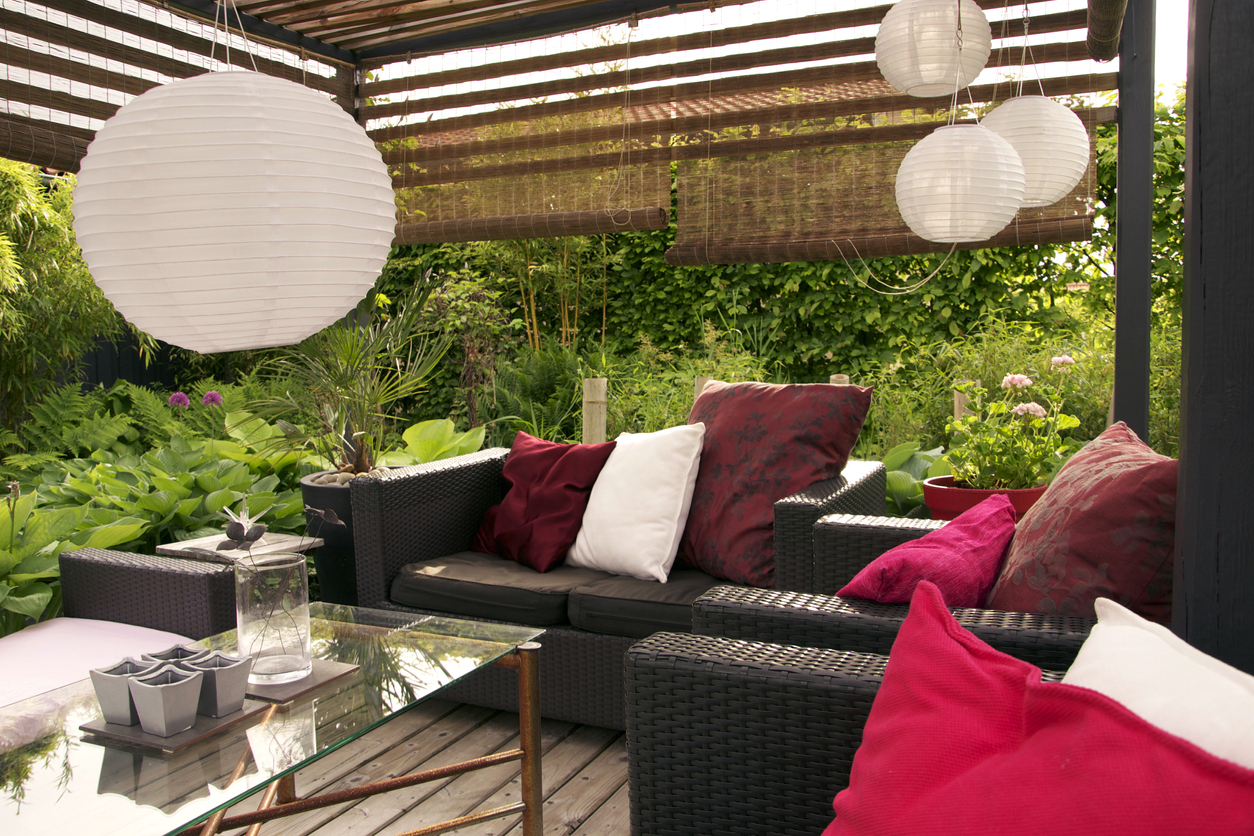
If you’re fortunate enough to have a great view from your yard, a pergola will frame it rather than block it. But if you’re in a heavily populated subdivision, don’t expect much privacy (or a nice view) from a pergola. Their openness doesn’t hide anything from the neighbors.
But there are a few ways to get around that: adding lattice walls, hanging curtains, and growing vines up the posts all enhance privacy. However, each of those options comes with drawbacks, like increased maintenance.
